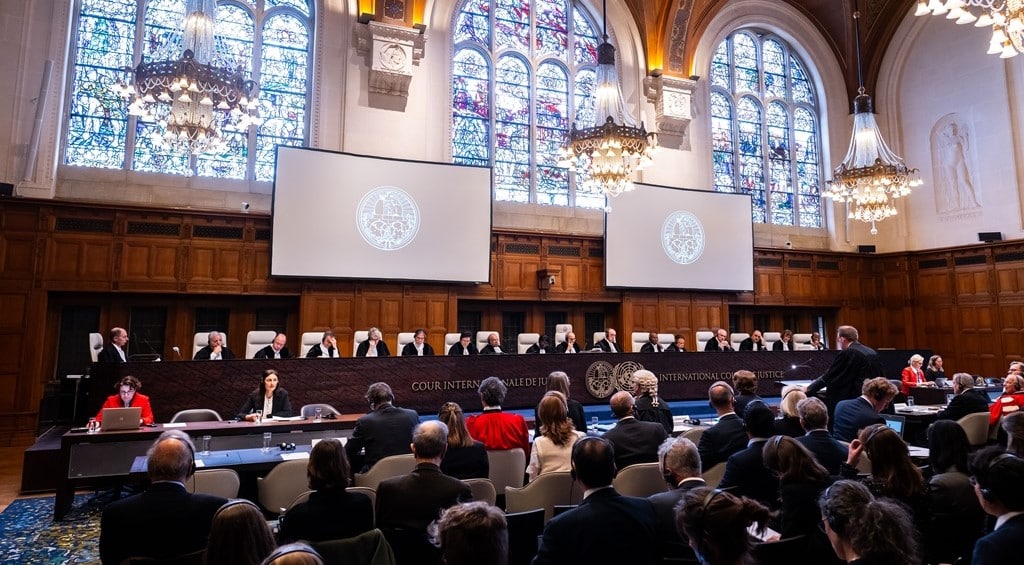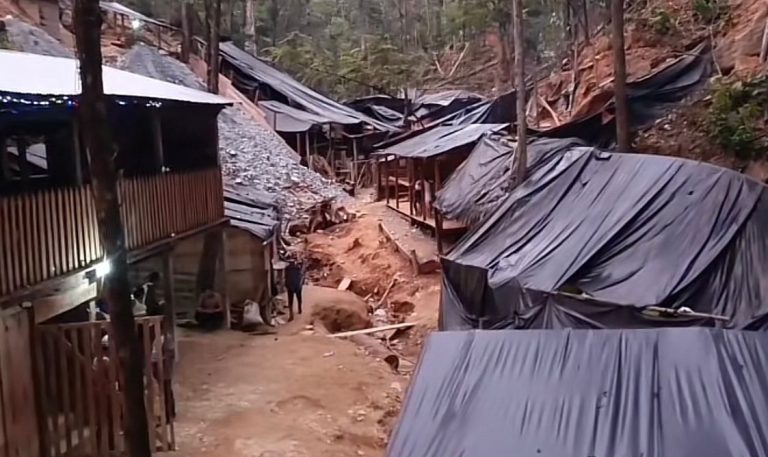19 de julio 2023

ICJ Rules Against Nicaragua's Request For Germany to Halt Arms Sales to Israel

PUBLICIDAD 1M
PUBLICIDAD 4D
PUBLICIDAD 5D
Amaru Ruiz denounces that the illegal artisanal miners' settlement is a few kilometers from an Army and MARENA post, but authorities have not acted

Imágenes de la ciudadela instalada en la reserva Indio Maíz. Captura de pantalla a video subido por los mismos güiriseros
A shantytown of between 2,000 and 3,000 artisanal miners has been illegally established in the area known as Las Cruces, a protected area of the Indio Maíz Biological Reserve. The settlement is located only seven kilometers from the Nicaraguan Army and MARENA command post, but neither has taken any action against it, denounces environmentalist Amaru Ruiz.
"This activity is completely illegal within the protected zones of the reserve and is having negative impacts on the quality and conditions of the forest. It is contaminating main water sources with mercury and it is having social impacts due to drug trafficking, human trafficking and prostitution," warned Ruiz, who leads the Fundación del Río (River Foundation), one of the more than 3,200 NGOs outlawed by Ortega since 2018.
Ruiz' denunciation is backed by a series of videos that were recorded and uploaded to the TikTok platform by the artisanal miners themselves. The images show the shacks made of wood and sheets of plastic. There are even bars operating inside the Indio Maíz reserve.
"We had already gone into this settlement, but because we feared there would be reprisals against people who entered, we didn't take videos. But now we have evidence of the magnitude of this artisanal mining site that they built [in the reserve]," says Ruiz.
Ruiz explains that this is the third illegal artisanal mining site that has been identified in the protected areas of the Indio Maíz reserve. The first two are located on the La Chiripa and El Naranjo hill. He says the most worrisome thing about this new one, located in Las Cruces, is that it is close to the Nicaraguan authorities' command posts and yet they are not making much of an effort to stop them.
"The government knows about the site because three days ago the Army issued a statement in which they reported the arrest of a person from whom they seized a mineral grinder used in the illegal mining operation…. We have also publicly denounced the location of the illegal site so that the authorities could take action, but they haven't done anything," laments Ruiz.
According to Ruiz, there are a number of reports about artisanal mining in the Indio Maíz reserve. Deaths have been reported, and there are reports of drug trafficking and human trafficking. There have also been reports of artisanal miners being arrested when they illegally enter the territories or when they travel by boat to San Juan de Nicaragua.
"Beyond the environmental impacts, there are social impacts for the artisanal miners themselves, who have no job security because everything is based on a gold economy. This means that illicit drugs are coming in. We've been told they are using cocaine to maintain the levels of work required, because they need to work really hard for very long hours to extract the gold," says Ruiz.
Ruiz adds that there are also a number of connections with other contraband products that are being transported from El Castillo or Costa Rica.
Ruiz says that the shantytown in Las Cruces was started by artisanal miners who had settled in Las Crucitas, Costa Rica. This set off an illegal "gold rush" that generated about a hundred extraction points in the area where hundreds of people moved back and forth between the two countries.
However, actions by Costa Rican security forces against the sites caused several of these camps to move to other areas. "So many of these people who were Nicaraguan migrants, who came from the Mining Triangle and other historical [gold mining] zones, moved to the protected areas of Indio Maíz," explains Ruiz.
The Ortega dictatorship and its local authorities have backed these processes of illegal gold extraction in the biological reserves. They've also backed the invasion of settlers into indigenous territories, leaving an estimated 70 indigenous Miskitos and Mayangnas murdered in the last decade without the authorities containing this genocide or listening to the petitions of the community members.
This article was originally published in Spanish in Confidencial and translated by our staff.
PUBLICIDAD 3M
Confidencial es un diario digital nicaragüense, de formato multimedia, fundado por Carlos F. Chamorro en junio de 1996. Inició como un semanario impreso y hoy es un medio de referencia regional con información, análisis, entrevistas, perfiles, reportajes e investigaciones sobre Nicaragua, informando desde el exilio por la persecución política de la dictadura de Daniel Ortega y Rosario Murillo.
PUBLICIDAD 3D